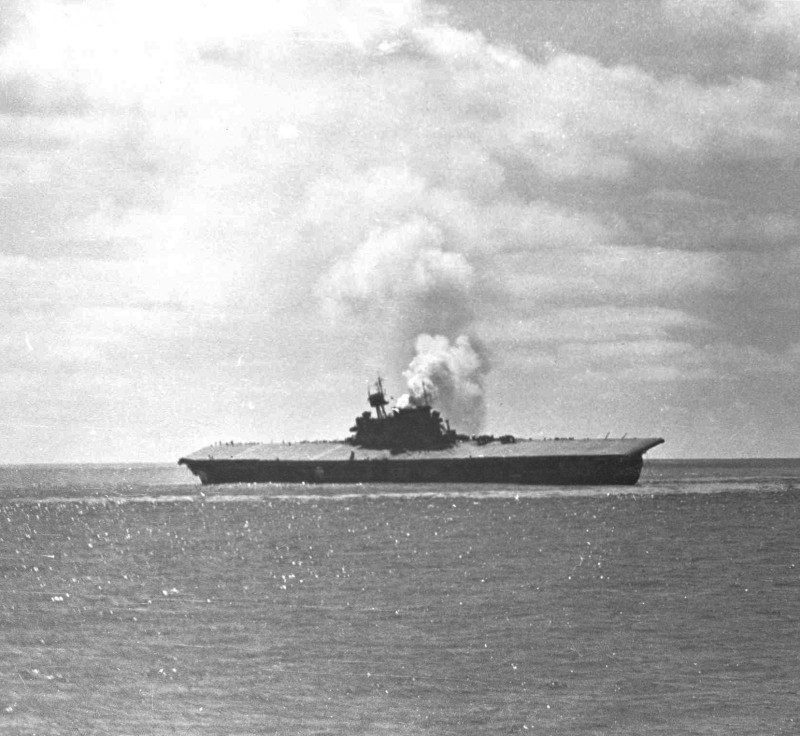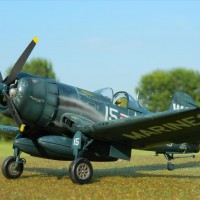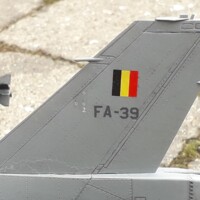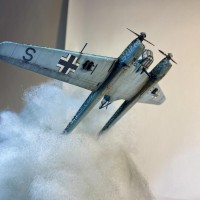77 years ago today
From my coming book "I Will Run Wild", quoted from the memoirs of John Bridgers, a naval aviator who experienced the Doolittle Raid, the Battle of Midway, the Battle of Guadalcanal, the Battle of the Philippine Sea and the Battles of Leyte Gulf:
Aboard Yorktown, John Bridgers and the other pilots held back from the morning strike did their best to stay out of the way. “The planes from the fourth Japanese carrier found the Yorktown before we found their ship and, in short order, we were under attack. We pilots had no duties other than to sit in our ready room. Unable to see out, we became more and more tense with no activities to release the tension. This was by far the toughest experience I had during the war. Our antiaircraft guns began shaking the ship, and we figured enemy planes were closing in. In steel ships, there were many plates to rattle and reverberate, so the firing of guns was a noisy din indeed. Most of us gathered around the plate patching the ready room deck after one fellow said, ‘Surely lightning won't strike twice in the same place!' The response was ‘But do you think the Japs know that?' Just as quickly, we dispersed to our empty desk-seats, and in short order the ship was struck by a couple of bombs. Since the overhead of our ready room was the underside of the flight deck above, we felt considerable jolts and the lights blinked out, to be automatically replaced by the dim red glare of battle lamps, and smoke was immediately evident. The attack passed quickly. In a few minutes, we were released to move topside and survey the damage. By now, our ship was dead in the water.”
Once on the flight deck, Bridgers was immediately confronted with war's cost when he saw bodies covered with tarpaulins. Yorktown had weathered the first strike and was soon able get underway and bring planes aboard; then came warning of a second strike. “After the first attack, I observed that many had been injured because they were standing around upright and were either hit by flying debris or knocked up against projecting fittings. This must have been something noticed by the others, for all of us immediately lay down prone on the deck — a precaution well worthwhile. Next, there was a tremendous explosion and I was lifted bodily what felt to be a foot or more off the deck. I now knew what a torpedo hit felt like. Almost immediately, it was evident that the ship was listing to one side and was once again dead in the water. Word was passed to abandon ship. I went back to the ready room and put on my Mae West life jacket. Back topside, knotted life lines had been let down over the low side of the hull and people were beginning to lower themselves into the water. Large life rafts were thrown over the side and the grim business got underway. I walked around the island and across the deck, trying to decide when I would go, secretly hoping someone would change their mind about the whole affair. I passed Captain Buckmaster taking a turn around the deck and he told me to hurry and get off the vessel. In several minutes, I passed him again and he said: ‘Son, I thought I told you get off this ship. Now get moving!'”
Bridgers took a line down as far as it would go and then dropped into the sea below. He soon discovered he had lost his shoes when he hit the water. Several minutes later, he came across a wounded sailor whom he took under tow. After what seemed a long time, the two were picked up by the destroyer USS Hughes (DD-410).
The next day, Bridgers and other Yorktown survivors were transferred to the submarine tender USS Fulton (AS-11) for the return to Pearl Harbor, where his personal problems took a turn for the worse. “Months earlier, when I shipped out from Norfolk, my main suitcase had been left behind in the rush of getting on the train at night. In it were my copies of my orders and pay records. On first reaching Pearl Harbor, the paymaster refused to open a new pay record until he had some confirmation of my orders. I wrote the paymaster in Norfolk and a validated copy along with a reconstructed pay record was waiting for me aboard the Yortown when we sailed for Midway. Unfortunately, these were lost along with my size 14-AA shoes. When we got back to Pearl Harbor after Midway, the paymaster again refused to issue me my back pay on just my say-so. It was another month before I was re-entered on the regular payroll, and it was several years later before I got the back pay I had missed.”





Nice anecdote Tom - thanks for posting.
Tom, great piece of history there. Thanks.
Told you, Gary...
Another one for the shelf, Tom.
‘Liked’
A great read!